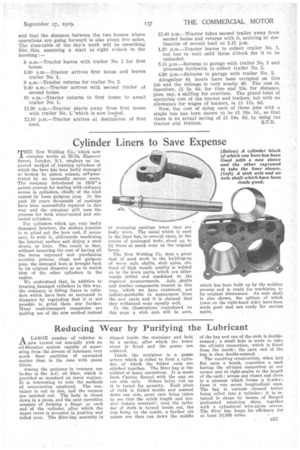Cylinder Liners to Save Expense
Page 69

If you've noticed an error in this article please click here to report it so we can fix it.
TEM New Welding Co.";'vvhich now occupies works at 32-34, Eanover Street, London, N.1, employs an improved toe0od of treating cylinders of which the bore has been badly damaged or broken by piston seizure, orrpertetrated by an unusually severe score. The company introduced in 1919 a patent process for dealing with ordinary scores in cylinders, chiefly of the kind cansed by loose gudgeon pins. In the past 10 years thousands of castings have been successfully repaired in this way and the company still uses the process for both water-cooled and aircooled cylinders.
For cylinders which are very badly damaged, however, the modern practice is to grind out the bore and, if necessary, to weld it, afterwards machining the internal surface and fitting a steel sleeve, or liner. The result is that, without incurring the cost of having all the bores reground and purchasing oversize pistons, rings and gudgeon pins, the damaged bore is brought back to its original diameter so as to match that of the other 'cylinders in the engine.
We understand that, in addition to treating damaged cylinders in this way, the company is fitting liners to cylinders which have been so increased in diameter by regrinding that it is not possible to grind them any further. Many road-transport companies are making use of the new method instead of scrapping castings when they are badly worn. The metal which is used in the liner has, in-several eases, in the. courseof prolonged tests, stood up to 2i times as much wear as the original bores.
The New Welding Co. does a great deal of good Work in the building-up of worn axle shafts, stub axles, etc. Steel of high tensile quality is welded on to the worn parts, which are afterwards milled and machined to ,the required measurements. Axle .shafts and similar components treated in this way, which we have examined, are in distinguishable in appearance from the new parts and it is claimed that they withstand wear equally well.
In the illustrations reproduced on this page a stub axle will be seen,
which has been built up by the welding process and is ready for machining to its original dimensions. An axle shaft is also shown, the splines of which (seen on the right-hand side) have been made good and are ready for service again.




















































































































